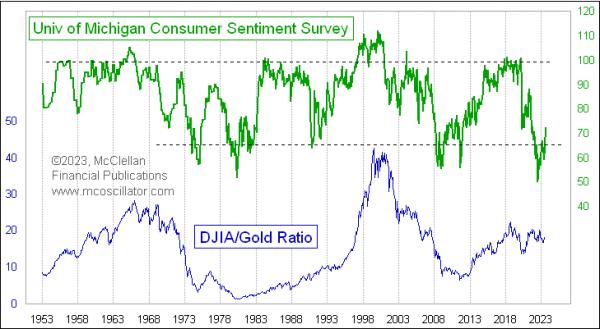Uranium is an important energy sector commodity, and its rising value is attracting investor interest.
2023 has seen uranium prices surge to a 15 year high of more than US$80 per pound, and experts are optimistic about the future. With demand set to increase as clean energy gains traction and supply security becomes increasingly important, many market watchers are calling for much higher prices, as well as share price gains for uranium stocks.
With uranium’s bright future in mind, it’s worth looking at the world’s leading uranium miners. The list below lays out the five largest uranium companies by market cap. All data was current as of November 21, 2023.
1. BHP (NYSE:BHP,ASX:BHP,LSE:BHP)
Market cap: US$155.32 billion
BHP’s Olympic Dam mine in Australia is one of the largest uranium deposits in the world. Although copper is the primary resource mined at Olympic Dam, the asset also hosts uranium, gold and silver.
After completing a comprehensive study, the major miner scrapped plans for a brownfields expansion at Olympic Dam in late 2020. Citing the complexity of the copper deposit, BHP instead has opted to focus on ‘targeted debottlenecking investments, plant upgrades and modernization of infrastructure’ at the Australian property.
In the company’s 2023 fiscal year, uranium output from the Olympic Dam totaled 3.4 million metric tons (MT) of uranium oxide concentrate, an increase of 1.03 million MT from the previous year’s production.
Currently, BHP is looking for new opportunities to add to its resource profile. One area of interest for the company is Oak Dam in South Australia, at which high-grade copper, gold, silver and uranium mineralization has been identified. BHP is currently conducting resource definition drilling at the site.
2. Cameco (NYSE:CCJ,TSX:CCO)
Market cap: US$26.47 billion
Cameco’s key operations include a 50 percent stake in Saskatchewan-based Cigar Lake, which is considered the most prolific uranium mine in the world. The company also has a 70 percent stake in the McArthur River mine and an 83 percent interest in the Key Lake mill, both located in the province’s Athabasca Basin, which is a prolific uranium jurisdiction.
While Cameco is a well-known uranium producer, it has faced challenges in recent years. Like many companies, it took a hit during COVID-19, temporarily shutting down production at Cigar Lake in 2020.
Back in 2018, Cameco shuttered McArthur River and Key Lake due to weak uranium prices. The closures reduced Cameco’s uranium supply dramatically from 23.8 million pounds in 2017 to 9.2 million pounds in 2018.
In early 2022, Cameco announced that improving uranium prices had encouraged management to bring the operation back online. The first pounds of uranium ore from the newly reopened McArthur River mine were milled and packaged at the Key Lake mill in November 2022. The company plans to produce 15 million pounds of uranium per year from these operations by 2024, which is 40 percent below its annual licensed capacity.
In the US, Cameco owns the Smith Ranch-Highland operation in Wyoming’s Powder River Basin, as well as the Crow Butte operation in Nebraska; production was curtailed at both as of 2016. Additionally, Cameco has a 40 percent stake in the Inkai mine in Kazakhstan. The other 60 percent is owned by Kazatomprom (LSE:59OT,OTC Pink:NATKY).
Cameco inked a major contract with Ukraine in February that will see the mining giant supply uranium to the country’s nuclear industry through 2035. In October, the company signed a uranium supply agreement with one of China’s largest nuclear power operators, China Nuclear International.
3. NexGen Energy (NYSE:NXE,TSX:NXE,ASX:NXG)
Market cap: US$4.61 billion
Uranium exploration and development company NexGen Energy is focused on projects in Canada’s Athabasca Basin. Its main property is Rook I, which hosts a number of discoveries, including Arrow and South Arrow. NexGen also holds a 51 percent interest in exploration-stage company IsoEnergy (TSXV:ISO,OTCQX:ISENF).
NexGen’s feasibility study for Rook I ‘outlines an initial 11 year mine capable of producing 29 Mlbs U308 per annum (first 5 years), making it the largest and lowest cost uranium mine in the world,” according to the company.
The Saskatchewan government recently gave the green light for the company’s 2023 site infrastructure and confirmation program at Rook I, which will involve a comprehensive field program focused on infrastructure upgrades and confirming engineering data. NexGen signed an impact benefit agreement in June with the Métis Nation-Saskatchewan Northern Region 2 and the Métis Nation-Saskatchewan; it covers all phases of the Rook I project.
The Saskatchewan government approved the project’s environmental assessment, green lighting the development of Rook I. ‘NexGen is the first company in more than 20 years to receive full Provincial Environmental Assessment approval for a uranium project in Saskatchewan,’ states a press release.
4. Uranium Energy (NYSEAMERICAN:UEC)
Market cap: US$2.43 billion
Uranium Energy has two production-ready, in-situ recovery (ISR) hub-and-spoke platforms in South Texas and Wyoming that include fully licensed and operational processing capacity at the Hobson and Irigaray plants. The company also has a pipeline of seven US-based ISR uranium projects with all of their major permits in place.
Uranium Energy has made a number of strategic acquisitions recently, including UEX in August 2022 and the development-stage Roughrider uranium project from Rio Tinto (ASX:RIO,NYSE:RIO,LSE:RIO) in October 2022. These were followed by the acquisition of a portfolio of uranium exploration projects in Saskatchewan’s Athabasca Basin from Rio Tinto.
The company began purchasing physical uranium in March 2021, and since then it has amassed one of the largest inventories of US-warehoused physical uranium. In December 2022, Uranium Energy won an award from the US Department of Energy to supply 300,000 pounds of U3O8 at a price of US$59.50 per pound to the strategic uranium reserve.
In 2023, Uranium Energy has made progress in building out its production capabilities. Its production restart at the Christensen Ranch ISR project was completed in July, and the company later finished initial resource expansion drilling at Christensen Ranch as well as Irigaray.
5. Energy Fuels (NYSEAMERICAN:UUUU,TSX:EFR)
Market cap: US$1.85 billion
The largest producer of uranium in the US, Energy Fuels provides major nuclear power plants with uranium from its White Mesa mill in Utah, the country’s only conventional uranium mill. The mill has a licensed capacity of over 8 million pounds of U3O8 per year. Aside from White Mesa, the company holds the Nichols Ranch ISR project in Wyoming. Nichols Ranch is currently on standby, and has a licensed capacity of 2 million pounds of U3O8 per year. Outside uranium, Energy Fuels produces rare earths and vanadium.
Energy Fuels has three long-term uranium sales contracts with US nuclear utilities for a total of 3 million pounds, with deliveries to occur between 2023 and 2030. The US Department of Defense awarded the company a strategic uranium reserve contract to sell US$18.5 million worth of uranium concentrate to the US government in December 2022.
Additionally, Energy Fuels has one of the largest S-K 1300 and NI 43-101 compliant uranium resource portfolios in the country. This includes a pipeline of uranium and uranium-vanadium projects that are on standby and in various stages of permitting and development. In 2023, Energy Fuels has made progress in preparing for production restarts at four of its conventional uranium and uranium-vanadium mines. The company expects to begin output at one or more of these mines by early 2024. The mined material will be stockpiled at the White Mesa mill until enough is accumulated to initiate a mill campaign, which is forecast for late 2024 or early 2025.
FAQs for uranium investing
What is uranium?
First discovered in 1789 by German chemist Martin Klaproth, uranium is a heavy metal that is as common in the Earth’s crust as tin, tungsten and molybdenum. Named after the planet Uranus, which was also discovered around the same time, uranium has been an important source of global energy for more than six decades.
What country has the most uranium?
Australia and Kazakhstan lead the world in both terms of uranium reserves and uranium production. Australia takes first prize for the world’s largest uranium reserves, representing 28 percent globally at 1,684,100 MT of U3O8. However, the Oceanic country ranks fourth in global uranium production, putting out 4,087 MT of U3O8 in 2022.
For its part, Kazakhstan controls 13 percent of global uranium reserves and leads the world in uranium production with 2022 output of 21,227 MT. Last year, Canada passed Namibia to become the second largest uranium producer, putting out 7,351 MT of U3O8 in 2022 compared to Namibia’s 5,613 MT. The countries hold 10 percent and 8 percent of global reserves respectively.
Securities Disclosure: I, Melissa Pistilli, hold no direct investment interest in any company mentioned in this article.





























